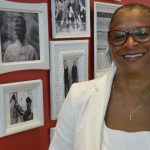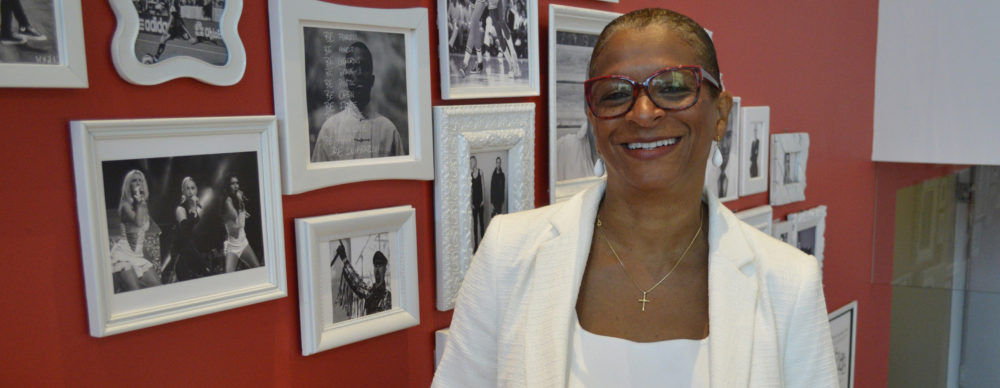[ad_1]

For Sandra Sims-Williams, diversity and inclusion represent a deep professional and personal passion, helping to serve as “an active and action-oriented voice for the voiceless.” As chief diversity officer of Paris-based Publicis Groupe, Sims-Williams brings that level of commitment to the development and management of D&I initiatives that impact the 92-year-old company’s 77,000-plus employees worldwide.
The third-largest communications company in the world, Publicis has such iconic advertising firms as Leo Burnett Worldwide, Saatchi & Saatchi, and Starcom Mediavest under its massive, multimedia umbrella. In today’s connected world in which it must rapidly serve multiple audiences across divergent cultures and demographics, the holding company, Sims-Williams says, is focused on “The Power of One—allowing people to utilize, think, and be free to put forth ideas, and let their creative juices flow.” Moreover, she adds that this time of great change will also be driven with the introduction of Marcel, an AI-based platform “built on the foundation of four key pillars: knowledge, connectivity, opportunity, and productivity.”
Under the corporate vision statement—“Viva la Difference!”—the 20-year-plus D&I veteran, who holds a bachelor’s degree from Rutgers University and a master’s from Hunter College, discussed her charge to execute a collective D&I strategy that creates a collaborative workforce to maximize the ideation process, advance client service and bolster global competitiveness. Here are edited excerpts of that conversation.
How do you infuse a diversity and inclusion philosophy and practice in such a sprawling organization as Publicis?
When the agency I was with was acquired by Publicis Groupe, the mantra was, “Viva la difference!” and I was like, “Hooray, this is it.” I don’t even have to create anything. You have said that you’re embracing difference. Let’s just build a strategy around [it], which is what I did.
The first thing I did was focus on retention and not recruitment. My idea was to actually measure the environment so that we knew whether people actually were having a decent and fair journey through these agencies. So we created a council where we had all the agencies represented to develop a strategy. Now they all weren’t in the same place with diversity. There were agencies that had a focus on diversity, some that had nothing, and some that were inching along. So as a holding company, we set the table around retention, recruitment, professional development, leadership, advocacy, commitment, and community.
So how did you get the agencies to focus on these areas?
We built the house. Some didn’t need the things we have because they were already there. They were already recruiting from HBCUs. There were workshops happening in some of the agencies. One agency that had nothing going on decided to flip this by creating a program called “The Multicultural Talent Pipeline.” The important part was that they knew what they were doing in terms of the environment.
When I think about the strategy we developed for Publicis Groupe in the US, it was about having high touch with people because that’s what we’re dealing with. We’re dealing with human beings; understanding and making it come to life with the audiences that we have was very important.
Bringing the agencies together was a really high point for us. In fact, we had the first CEO roundtable in the U.S. All of that is to say that bringing people together has maximized what we can do and the success that we’ve had.
Share with us the importance of the Business Resource Groups (BRGs).
We had two. We now have nine with 54 chapters. And that’s over a good five-year period. The most important part is that people raised their hands. They come and ask, “Can we do this?” So we have Men of Color Alliance – MOCA. We have Egalite [for the LGBT population] and VivaWomen! Out of VivaWomen, we now have VivaMama, VivaTech and VivaWomen of Color. The last two that came in was PubVets and GENNEXT for young professionals.
We ask each to have a mission. They can’t just up and get money and go about their business. There’s a charter for each group. There are co-leads, national co-leads, and regional leads. They are volunteering because they feel very strongly about their particular groups.
How has this practice been extend outside of the US?
We started in the US given that 53% of the business is here, however it is not ignored given we have spread the BRGs to other countries like Brazil, Singapore, the UK and France. There’s no formal strategy that has been planned for Europe and the UK, but I’m presenting that and saying we should pilot it in the UK so that they have the same kind of tools and opportunities people in the U.S. have had.
So how do you foster the cultural connections and understanding needed to create the sense of community that makes the company a dynamic whole?
I don’t believe in diversity training because you can’t train people to change their minds. What you can do is create experiences for them to feel a different way about a subject matter or a group. For example, I’ve taken white women to the BLACK ENTERPRISE Women of Power Summit (BEWPS). One. in particular. serves as the example. She was a recruiter out of Boston and kept telling me she was interested in diversity. She came in for the dinner, and we went around the table talking about what each had experienced after the first day. She sat there, started crying and then said, “I have to tell you, I was terrified to come here because I didn’t know whether I would be accepted or how would people react to me. This has been a turning point for me because I have never been so welcomed, so embraced and felt so at home with these women. And I didn’t expect that.” So I only had to bring one to actually affect others. She’s taken that back and understood how to recruit better. And she did.
After people come back from [BEWPS], I have managers ask “What the heck went on there?” I had two [participants] last year who gained the confidence and courage to ask for overseas opportunities, and both of them got it.
What have been some of the other transformative conferences and initiatives?
We have done the 3% Conference that was created by a woman who was in Creative and started it because 3% represented the percentage of senior women in Creative. It took about three years before that 3% went to 5% and then 11%. Egalite does Out and Equal. There’s 3,000 to 5000 people attending the conference. That BRG has raised over a half-million dollars for charity.
The strategy of the conferences, business resource groups and professional development workshops are very much on point. We do unconscious bias workshops with the leadership. We do efficacy for professional women, men, LGBTQ and people of color. Efficacy is actually a workshop where we help people learn how to navigate their career and strangely enough, women and people of color, are not good at this. They’re not good at it because they’ve already walked into the room with baggage and when you’re in white corporate America, they’re always suspect of someone calling you stupid or thinking that you’re stupid.
So what do you teach African American professionals to advance in corporate America?
We talk about the stages of your career. When you first come in, you are going to be “heads down” to show that you actually can do your job. Second level, you are using your skills but you also have to have influence, meaning that people will actually listen to you and follow you. And then the third level is developing the relationships because in order for you to get to that very senior level, somebody has to know you. You have to have mentors. You have to have sponsors. You got to have people who advocate for you.
We have talent reviews. In those talent reviews, you’re not present. The only people present is your manager or the person your manager reports to. Now, if the person your manager reports to is in there and they don’t have day-to-day with you, how well can they speak of you, right? That means you have to have a relationship with that person so they know that when they’re speaking, they’re speaking truth.
Do you address unconscious bias from a generational standpoint as well as related to race and gender?
Absolutely. We don’t have a problem with millennials. That’s more than 40% of our population. You may want to ask about the older generation. After 40 what? It’s like people suddenly think their brain cells are dying and we don’t really need them. And that’s not true.
You cannot just exclude an audience. One of our clients, L’Oréal, found that out. They started looking at the disposable income that senior women have, and they weren’t looking at what senior women needed in terms of cosmetics and makeup. The question on the table is who in that room in terms of L’Oréal would have said, “Oh! Well. Why don’t we talk to older women?” Right? Nobody would have said it. They’re all young. They wouldn’t have thought about it. We have to think about who it is we’re talking to.
How will you continue to keep this level of connection and communication throughout this vast, global organization?
The one piece that is high on our list is this platform called Marcel, which is like Alexa. We’re going to be able to manage all of our people across the globe. You can get assignments where they’re going to have a better idea and profile of the people that work for us. This is a platform that is going to be global and we’re going to have people maximizing our intellect and our creativity. That’s what Marcel’s set up to do. It’s actually in its pilot right now. They’ve talked about the diversity piece, “Big Town.” This is where you bring people together and cross-pollinate.
In order for us to work together, you’ve got to respect me. You got to respect my culture. You got to respect from [where] I’ve come. The best kind of collaboration is when we are open to doing that.
[ad_2]
Source link

